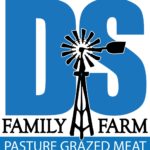Worried about what you are "really" eating? Have peace of mind with pasture grazed meats.
Annual Omega 6:3 Update
Each year after harvesting our Pasture Grazed Beef we send a sample of our beef to Midwest Labs in Omaha Nebraska for analysis. We raise our beef on pasture 24 hours a day, 7 days a week 365 days a year, with NO ADDED GRAINS. Does how we manage our herd actually make a difference in the final product our customers receive compared to conventional grocery store beef? Below is our updated chart from beef harvested last fall (2019).

2019 Results
Currently we harvest Pasture Grazed Beef off of green growing forages in August – October. The meat is tested in the winter and we report our previous years findings prior to the next harvest which is just a couple months away.
A recent study on grass-finished beef
Just over a year ago “A Nutritional Survey of Commercially Available Grass-Finished Beef” was published. A large number of samples of “commercially available” grassfed beef was obtained from 12 producers. “A wide variety of finishing strategies were indicated, with some producers relying solely on perennial pastures, and others finishing cattle on annual crops or by feeding a diverse array of harvested forages. There is great variation with what is defined as ‘grass-fed’.“
What did the study find when looking at Omega 6:3 ratios? “The results of the current study are consistent with reports that beef from cattle finished on fresh forages had greater n-3 (omega 3) and a lower n-6:n-3 (omega 6:3) ratio than beef from cattle fed harvested grass silage… the results of the current study indicate that cattle finished on fresh forages yield beef with lower n-6:n-3 ratio than those supplemented with harvested forages.“
Remember, this study was looking at commercially available “grass-fed” beef. The study points out that even if the product is labeled “grass-fed” only the cattle finished on fresh forages result in the highly desirable low omega 6:3 ratio end product. Beef finished on mechanically harvested forages such as hay and silage do not result in the lower omega 6:3 ratios. In some cases it was found some “grass-fed” producers “had significantly greater n-6:n-3 ratios… higher than previously reported values for beef from feedlot finished cattle.”
The study reports, in conclusion, omega 6:3 “ratio was numerically lower in beef from producers who indicated finishing cattle solely on fresh forages compared to beef from producers who finished cattle on harvested feeds.”
Not all “grass-fed” is created equal.
With no real current labeling guidelines for “grass-fed” or “grass-finished” beef you really do need to know your farmer to know your food (beef). Is the “grass-fed” beef you are purchasing harvested from fresh forages or from a feed yard where they were eating stored forages?
Let us just add this, we would gladly purchase a “grass-fed” beef finished on stored forages. With all the management considerations that go into raising beef without grains, sometimes the only option may be to harvest off stored forages. Considerations include balancing product demand with processing opportunities along with overall herd health and grassland availability.

So for now, with our small herd, we will continue to harvest once a year from fresh forages. What we call “pasture grazed” beef. We may try widening the window of harvest earlier in the summer and possibly extending into early winter since both of these times we have some green fresh forages. One other major factor that has recently come into play is processing availability. If you haven’t heard, there is a major bottle neck in processing locally raised beef for direct to consumer sales. Stay tuned, if we do harvest earlier or later, we will continue to test the meat to see what changes do occur in the product we are delivering.




